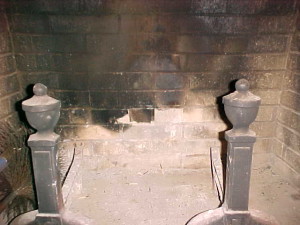It’s easy to think of your chimney as this decorative, yet invincible attachment to your home that doesn’t need to be regularly maintained. At the risk of sounding repetitive, once again we return to the importance of having your chimney and fireplace inspected and swept yearly. This time, the reason is chimney fires.

What is the cause of a chimney fire?
Especially in older masonry chimneys that aren’t well maintained, creosote buildup is just waiting to burn at high temperatures and destroy the masonry as well as the inner lining. The buildup, byproducts of burning green wood, cardboard, and gasoline, is highly flammable. Don’t think that prefabricated chimneys are excused though. They can stand up to higher temperatures, but once the lining is distorted by heat, it has to be completely replaced.
What do I do when it happens?
The signs can be dramatic with loud noises, shooting flames, and intense smells. They can also be quiet, with even hotter flames creeping along and destroying the chimney structure. If the fire is still burning when you discover it, close the damper and any doors on your fireplace. This will decrease the amount of oxygen the fire has access to, therefore starving it. Spray water around the chimney cap outside to keep the fire from spreading to your roof. If you still feel like the fire is continuing, call the fire department immediately. Sometimes though, the fire is already burned out before you find out it was there. Signs of a chimney fire can range from flaking creosote to cracks in masonry, even to damaged TV antennas that are attached to the roof. Any proof of smoke leaving through masonry mortar joints, and we just found the remnants of a chimney fire. The main goal from here is to fix your chimney system so that it once again conforms to safety standards set by the CSIA.
How do I prevent another one from happening?
Calling Environmental Chimney Sweep for an inspection and cleaning is the first step to recovery. We can assess the damage, as well as give you options on how to proceed. Once your chimney and fireplace are cleared for use again, only use completely dry or seasoned wood that produces no moisture when burned. It will probably be dark and cracked, but that means less creosote buildup in the future. Using newspaper to light a fire and not flammable liquids like gas or kerosene will keep the fire from getting out of hand.
Call us with any questions you have about proper care of your chimney and fireplace, and let us come by and inspect and sweep. We’ll both feel peace of mind this winter.
